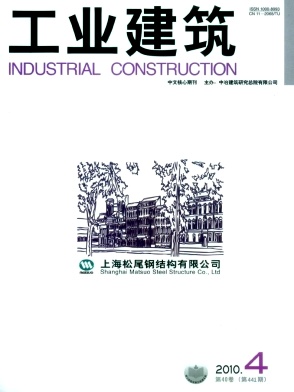|
范进,沈银良,张斌,等. 型钢混凝土受弯构件粘结滑移性能试验研究[J]建筑科学,2007,23(1):22-26.
|
|
[2] 郑山锁,邓国专,杨勇,等. 型钢混凝土结构粘结滑移性能试验研究[J]. 工程力学,2003,20(5):63-69.
|
|
[3] 杨勇,郭子雄,薛建阳,等. 型钢混凝土粘结滑移性能试验研究[J]. 建筑结构学报,2005,26(4):1-9.
|
|
[4] 王连广,慕光波,王澈. 钢骨高强混凝土柱的非线性分析[J]. 沈阳建筑大学学报,2005,21(2):107-110.
|
|
[5] Ortiz M. A Constitutive Theory for the Inelastic Behavior of Concrete [J]. Mech. of Mat. ,1985(4):67-93.
|
|
[6] Pijaudier-Cabot G,Bazant Z P. Nonlocal Damage Theory [J].ASCE Journal of Engineering Mechanics,1987,113: 1512-1533.
|
|
[7] Mazars J,Berthaud Y,Ramtani S. The Unilateral Behavior of Damaged Concrete [J]. Engrg. Fracture Mech. ,1990,35 (4/5):629-635.
|
|
[8] Mazars J,Pijaudier-Cabot G. Continuum Damage Theory:Application to Concrete [J]. J. Engrg. Mech. ,ASCE,1989,115(2):345-365.
|
|
[9] Zdenek P Bazant,Ferhun C Caner. Microplane Model M4 for Concrete [J]. Journal of Engineering Mechanics,2000,126(9):944-961.
|
|
[10] 李杰,吴建营. 混凝土弹塑性损伤本构模型研究Ⅰ: 基本公式[J]. 土木工程学报,2005,38(9):14-20.
|
|
[11] Farja R,Oliver J. A Strain-Based Biscous-Plastic-Damage Model for Massive Concrete Structures [J]. Int. J. Solids and Struct. ,1998,35(14):1533-1558.
|
|
[12] Rajesh S Kumar,Ramesh Talreja. A Continuum Damage Model for Linear Viscoelastic Composite Materials [J]. Mechanics of Materials,2003,35: 463-480.
|
|
[13] Pantazopoulou S J. Detailing for Reinforcement Stability in RC Members[J]. ASCE Journal of Structural Engineering,1998,124(6):623-632.
|
|
[14] 李磊. 型钢与混凝土界面粘结滑移行为试验研究与理论分析[D]. 西安: 西安建筑科技大学,2007.
|
|
[15] 郑山锁,邓国专,田微. 型钢混凝土结构粘结滑移性能的对比试验研究Ⅰ[J]. 哈尔滨工业大学学报,2005,37 (增刊) :516-519.
|
|
[16] 郑山锁,李磊,邓国专,等. 型钢高强高性能混凝土梁粘结滑移行为研究[J]. 工程力学,2009,26(2):63-69.
|


 Login
Login Register
Register E-alert
E-alert







 DownLoad:
DownLoad: